AP CALCULUS AB
1/38
There's no tags or description
Looks like no tags are added yet.
Name | Mastery | Learn | Test | Matching | Spaced |
|---|
No study sessions yet.
39 Terms
Trig Identities
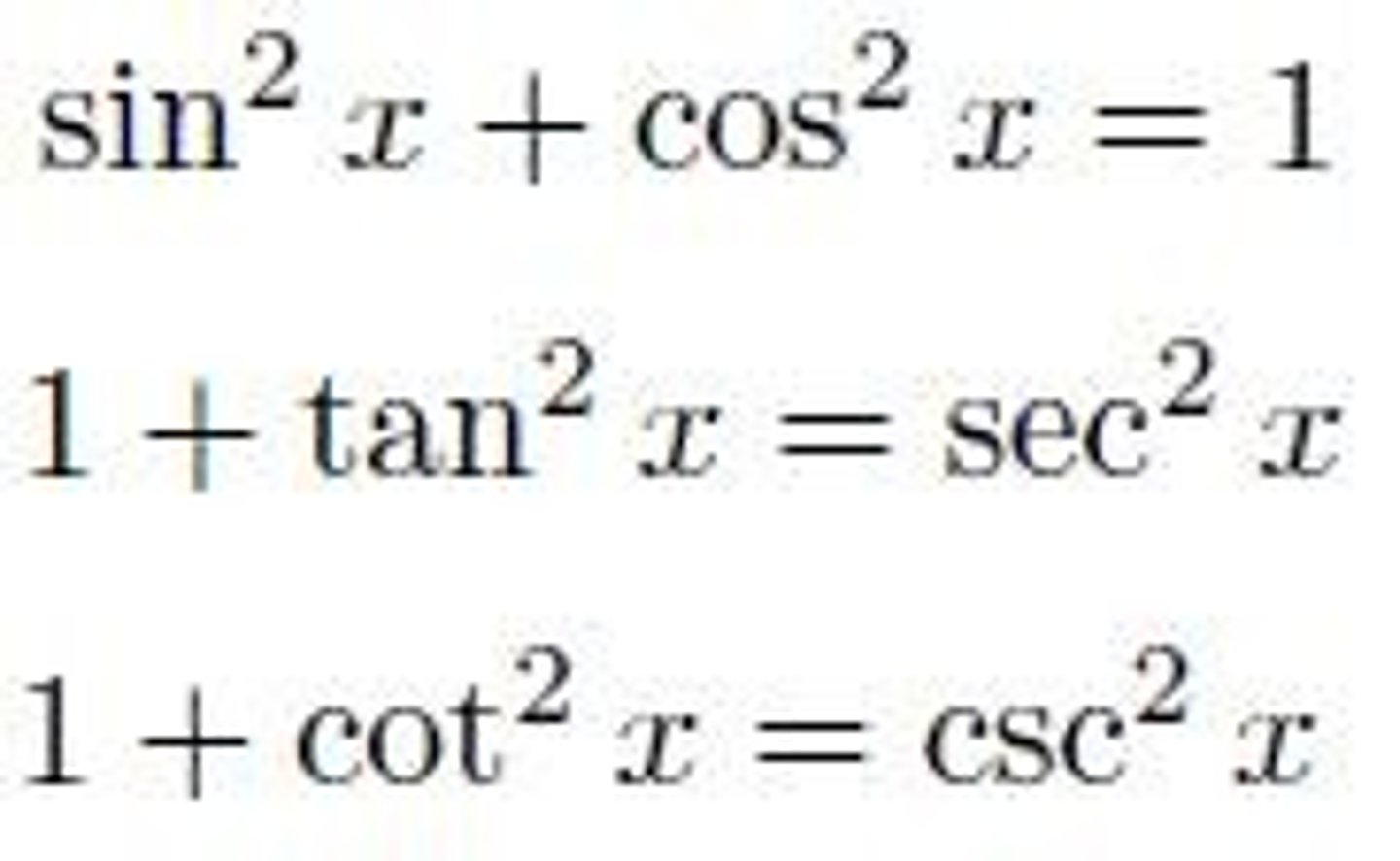
dy/dx
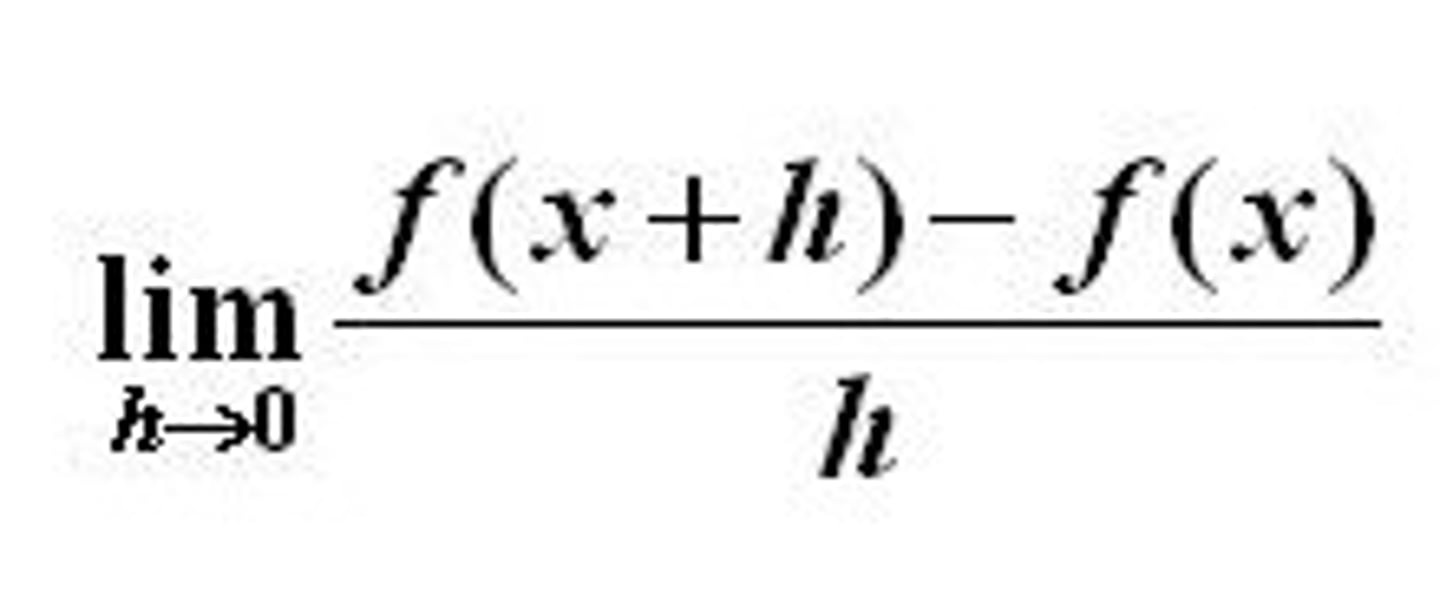
Intermediate Value Theorem
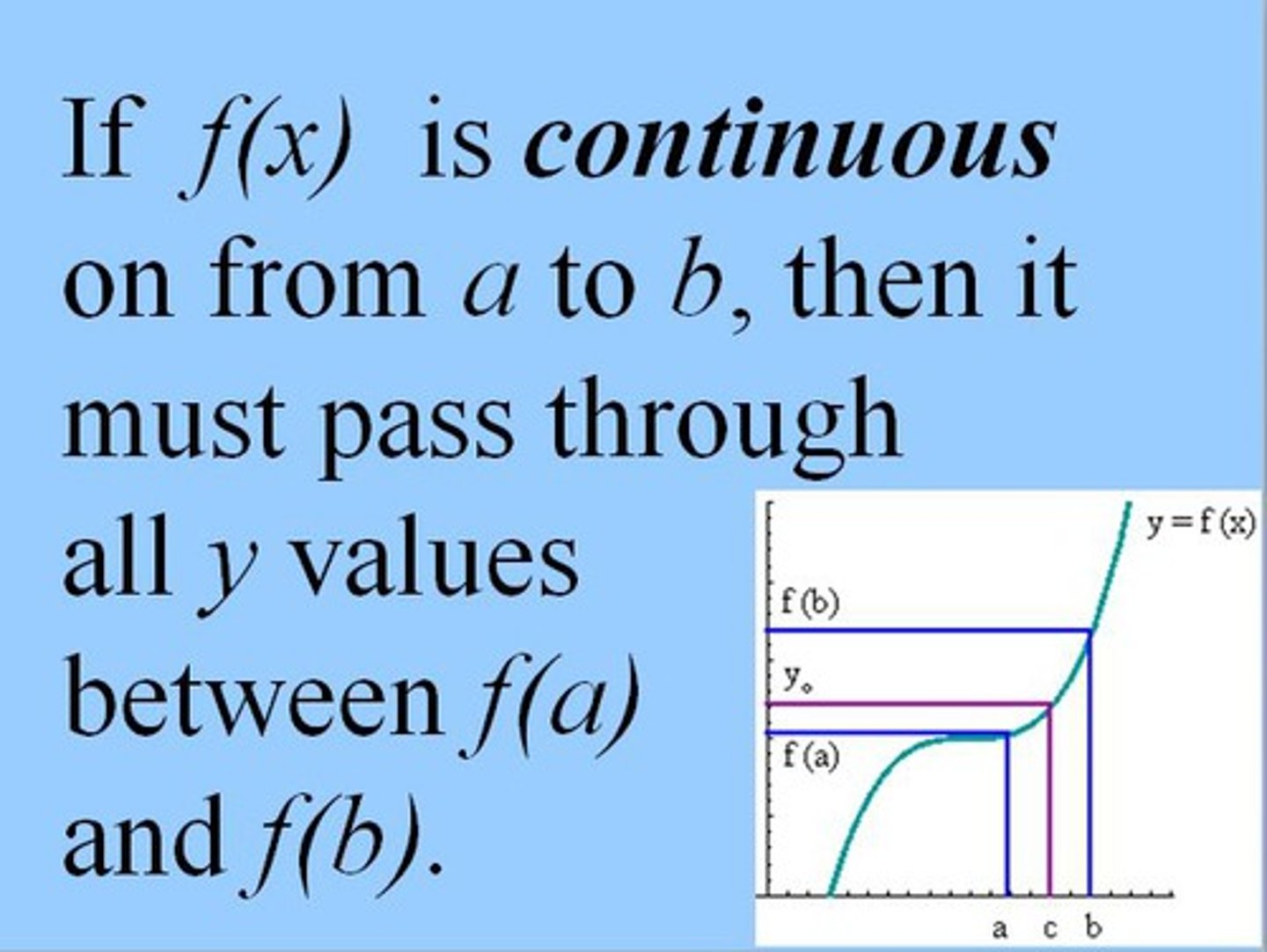
Extreme Value Theorem
There must be a max and min if the function is continuous on [a,b]
Linear Approximation
F(x)~=~f(a) +f`(a)(x-a)
Finding Average Velocity

Numerical Differentiation
Used to estimate the derivative
(F(x+h)-f(x))/h
Inflection Points
To find inflection points
1. Find the second derivative
2. Set the second derivative equal to zero
3. Solve for x
Optional
4. Plug in and solve for f(x)
Mean Value Theorem
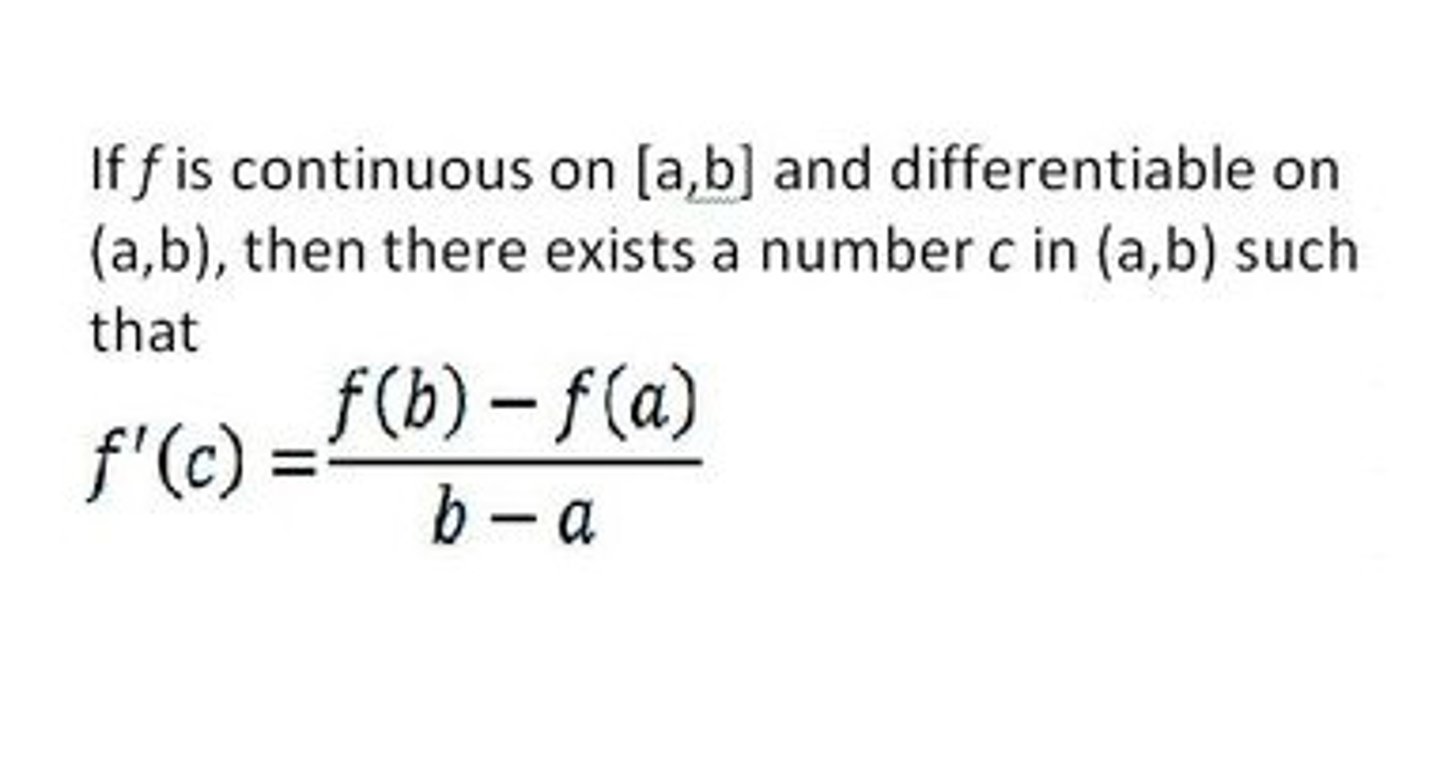
F(x): Increasing or Decreasing
If f`is positive, then f(x) is increasing
If f` is negative, then f(x) is decreasing
F(x): Concavity
If f`` is positive, then f` is increasing, and the concavity of f(x) is upwards
If f`` is negative, then f` is decreasing, and the concavity of f(x) is downwards
Absolute Max./Min.
Only occur at critical points or end points of a continuous function (guaranteed by the EVT)
Differentiation: Product Rule

Differentiation: Quotient Rule

Differentiation: Chain Rule

Differentiation: Inverse Functions
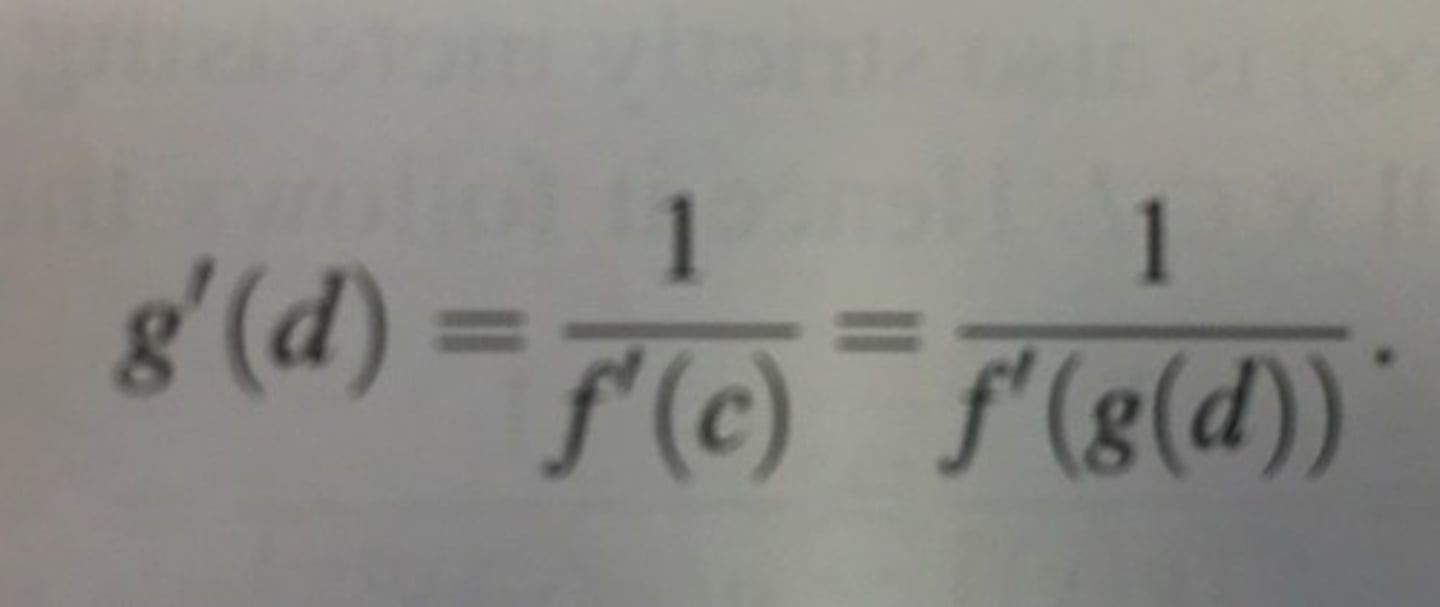
Differentiation: Implicit Functions
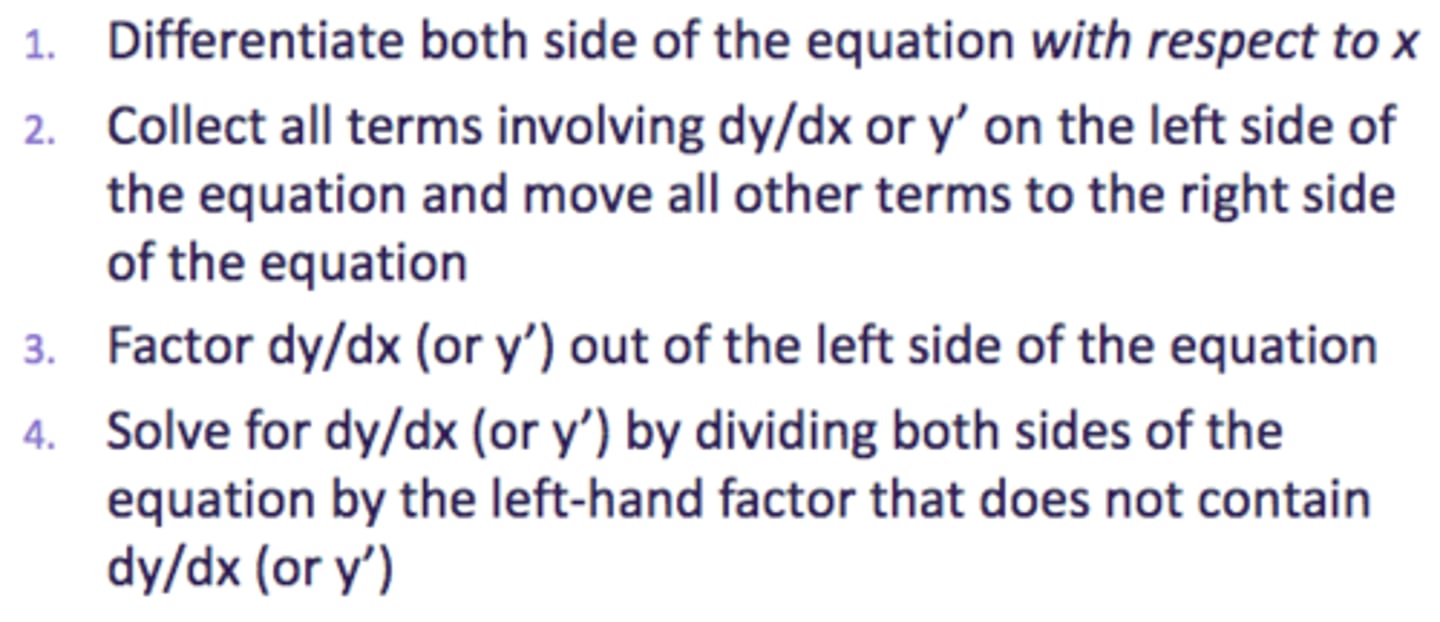
Differentiation: Power Rule
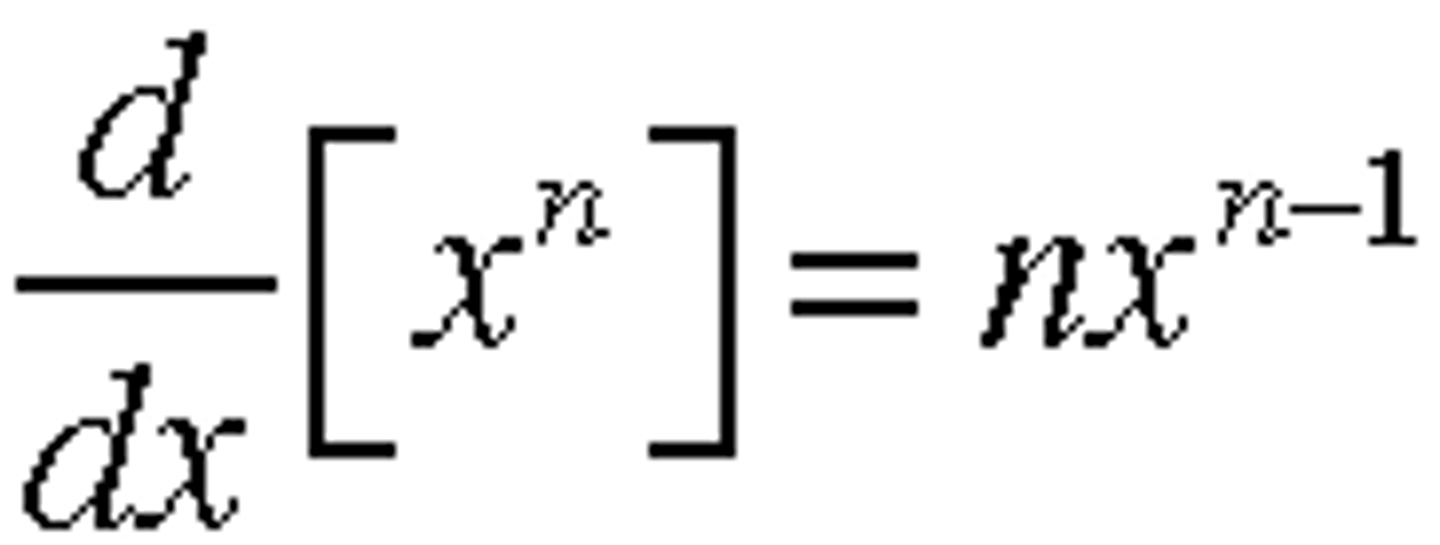
Differentiation: Logarithms
d/dx of ln|x| = 1/x
d/dx of log base a of |x| = 1/(ln(a)x)
d/dx of ln|f(x)| = f`(x)/f(x)
Differentiation: Trig Functions
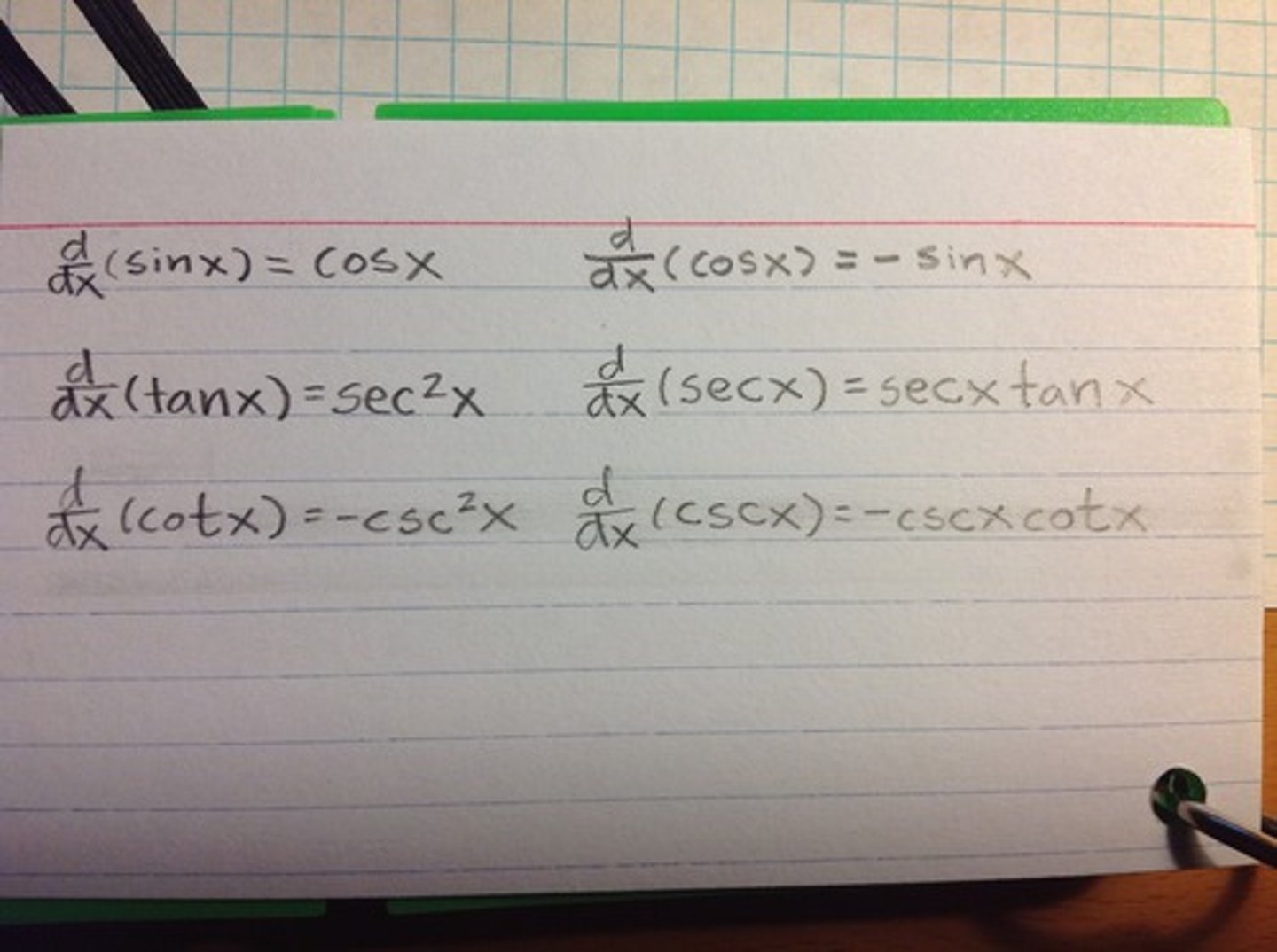
Related Rates
Suppose two variables, each a function of "time", are related by an equation.
1. Differentiate both sides of the equation
2. Use data given for variables and on of the rates to solve for the other rate
Optimization with Constraint
1. Visualize the problem; name the variables
2. Write down the objective function - the one to be optimized - as a function of two variables
3. Write down a Constraint Equation relating the variables
4. Use the constraint to rewrite the objective function in terms of one variable (Isolate one of the variables and then plug in for that variable)
5. Analyze the new function of one variable to find its optimal point(s) and the optimal value
Indefinite Integral

Definite Integral
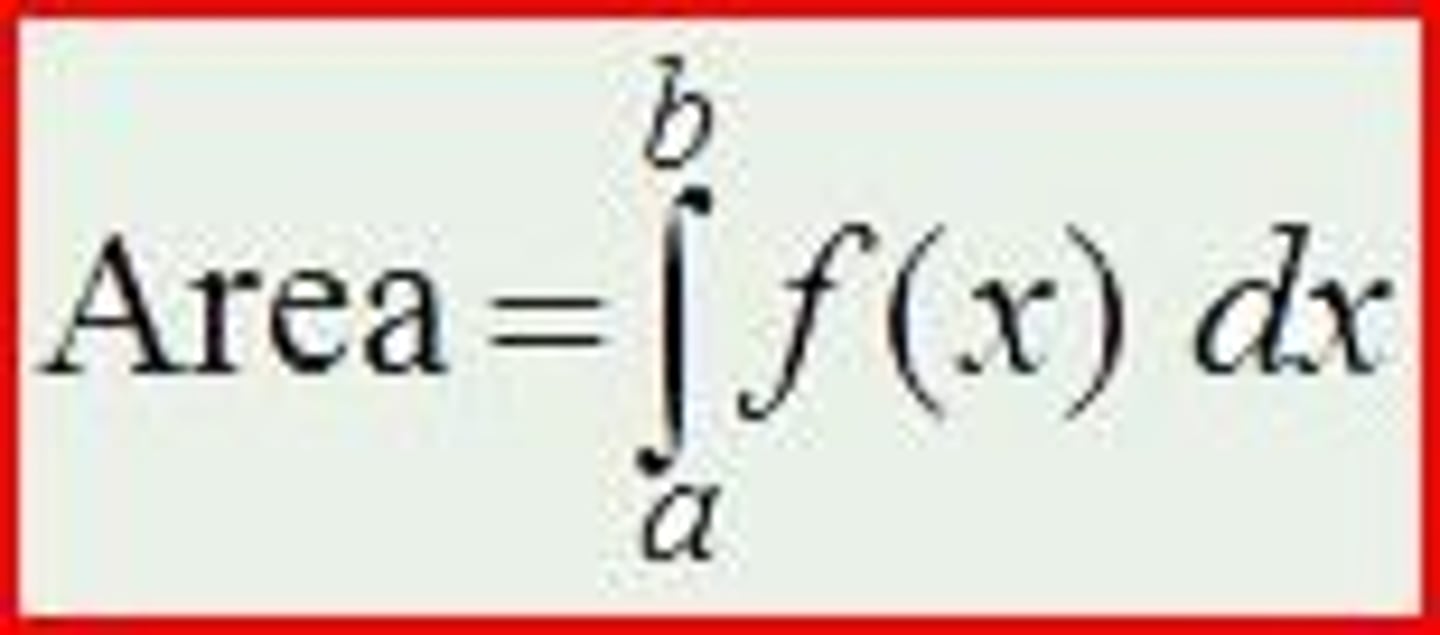
Fundamental Theorem of Calculus
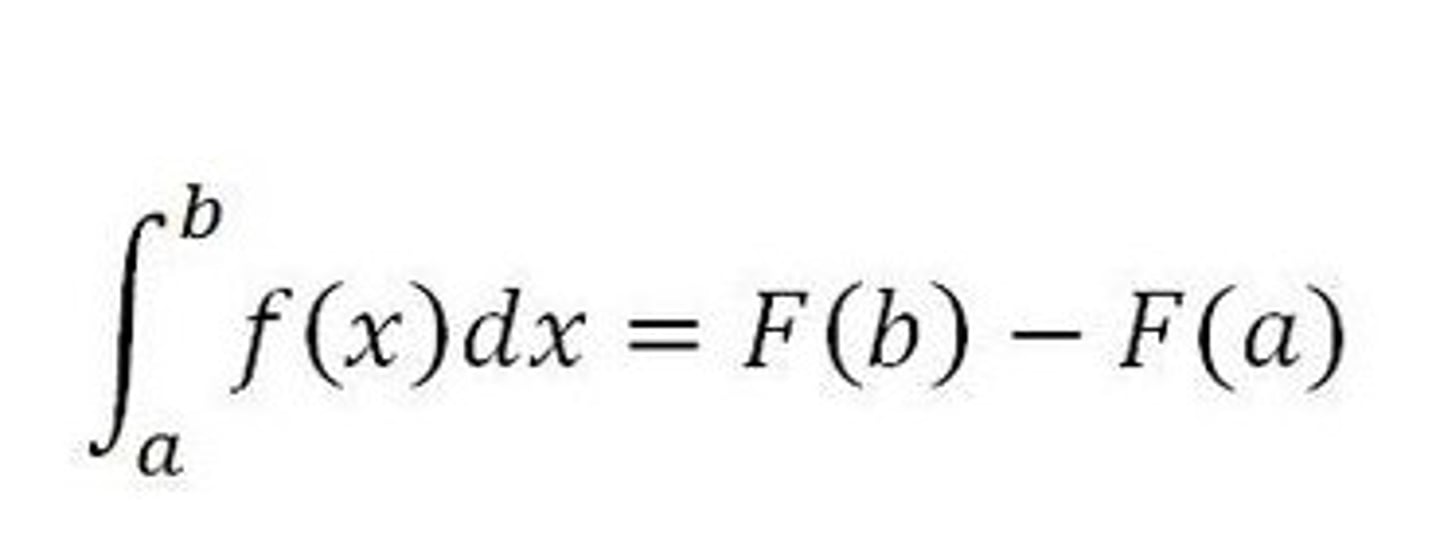
Second Fundamental Theorem of Calculus
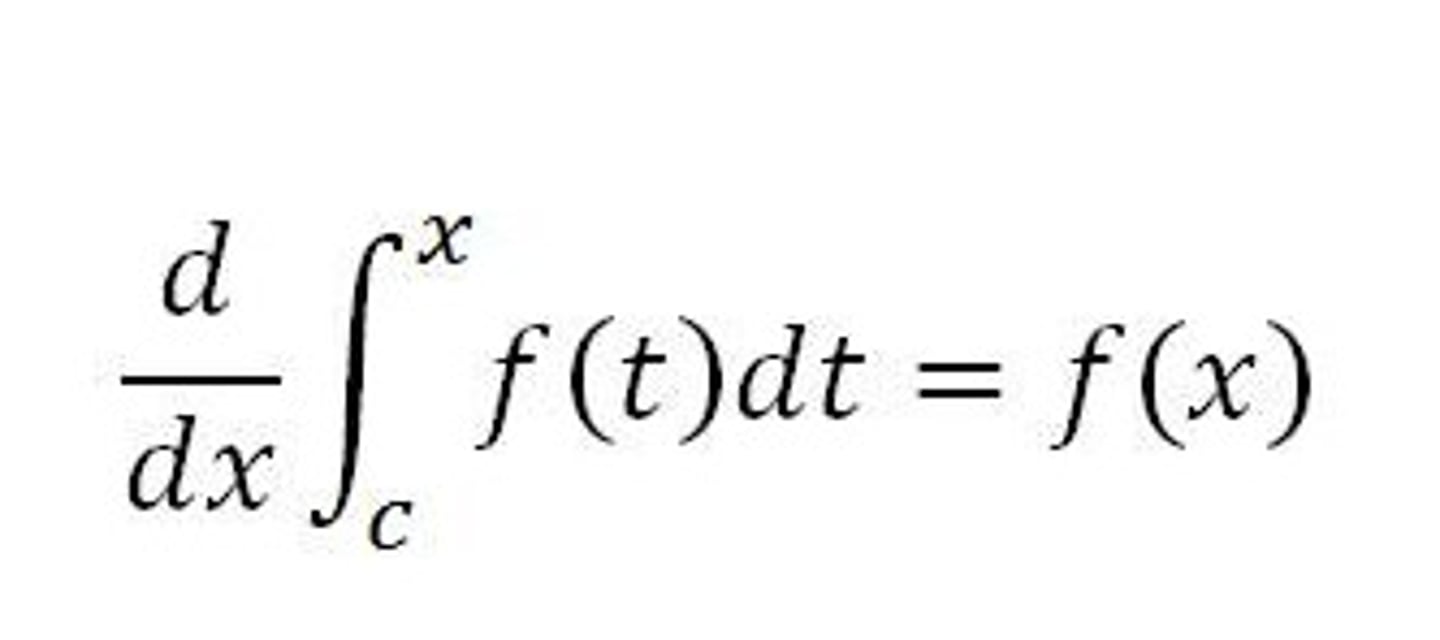
MVT for Integrals
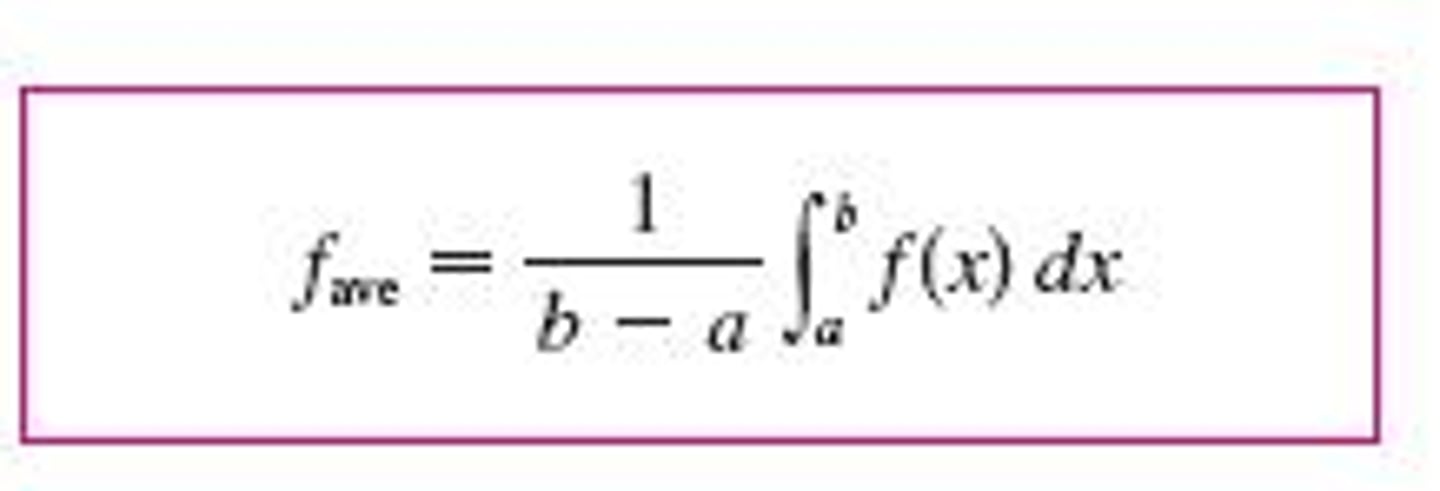
Integration: Power Rule
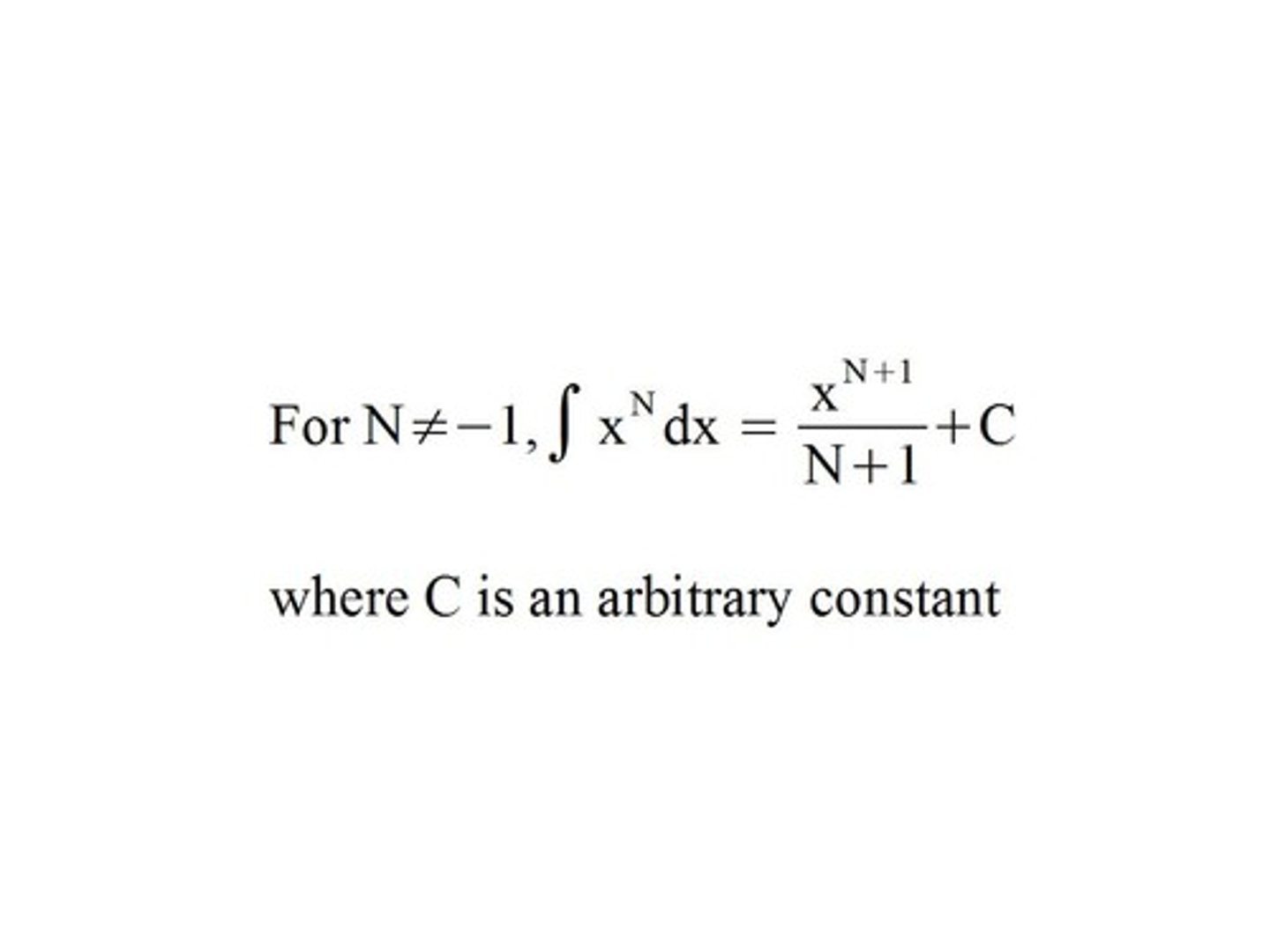
Integration: Natural Logarithm
(squiggly line antiderivative)d/du = ln|u| + C
Integration: Exponential Function

Integration: Trig Functions
http://calculus.nipissingu.ca/tutorials/integralgifs/int_indef_trigtable.gif
Area Between Curves

Volumes of Solids of Revolution
Rotating the the region between two curves about a line, then finding the volume created
Disk Volume
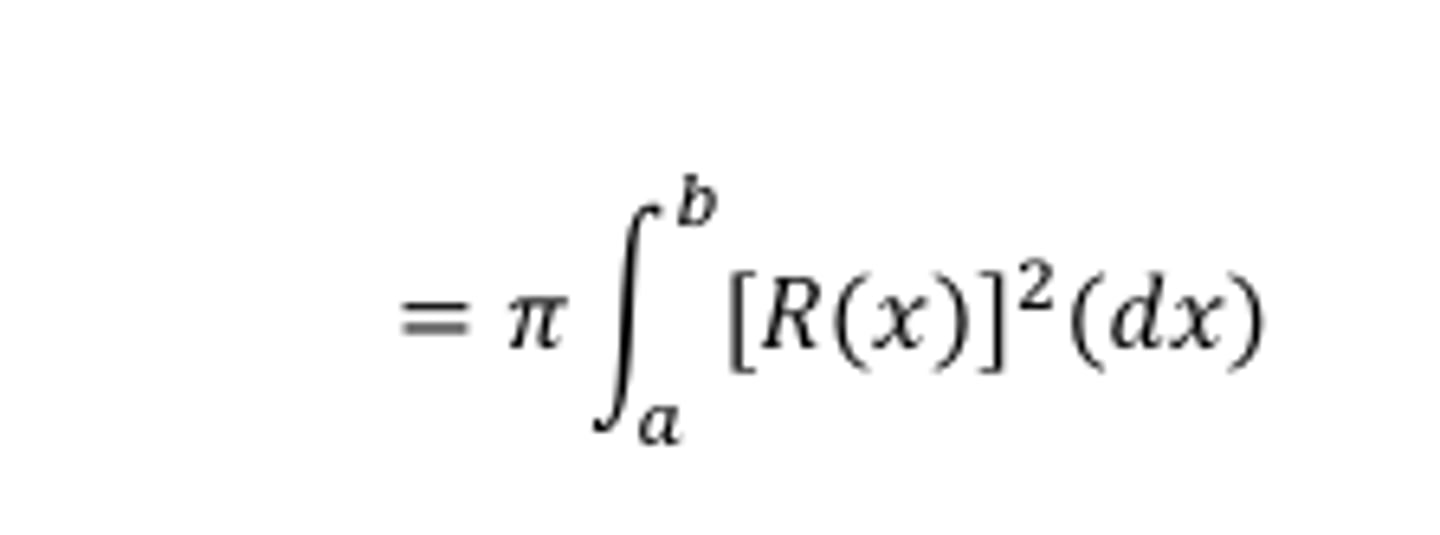
Washer Volume along x axis
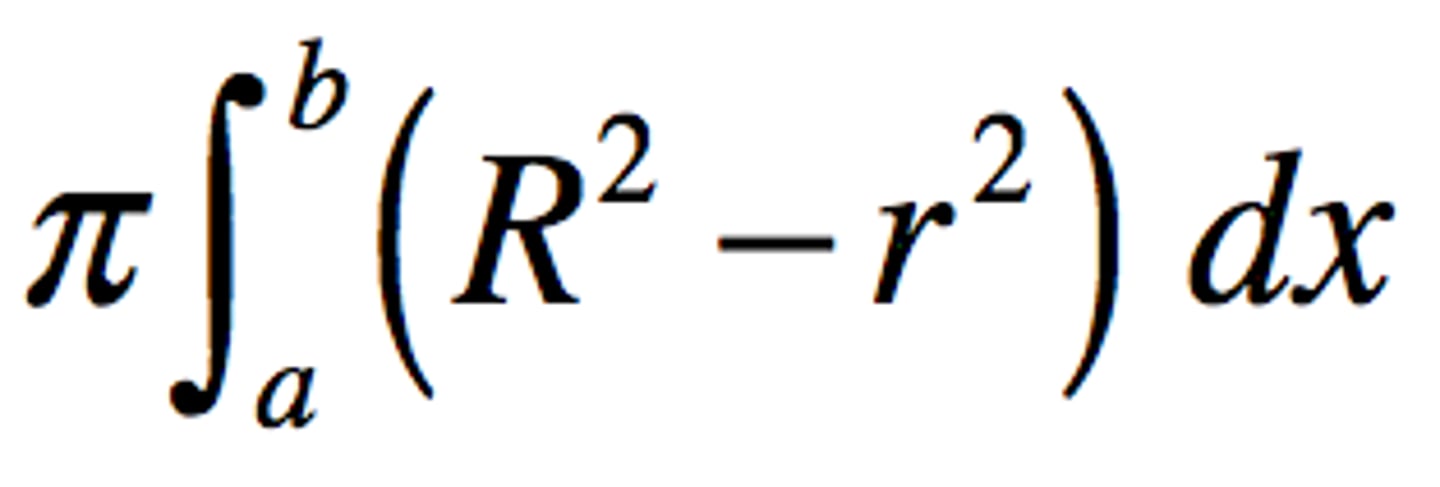
Washer Volume along y axis
Same as along the x axis simply replace x with y (replace every single x with a y)
Cylindrical Shell Volume
h = R-r
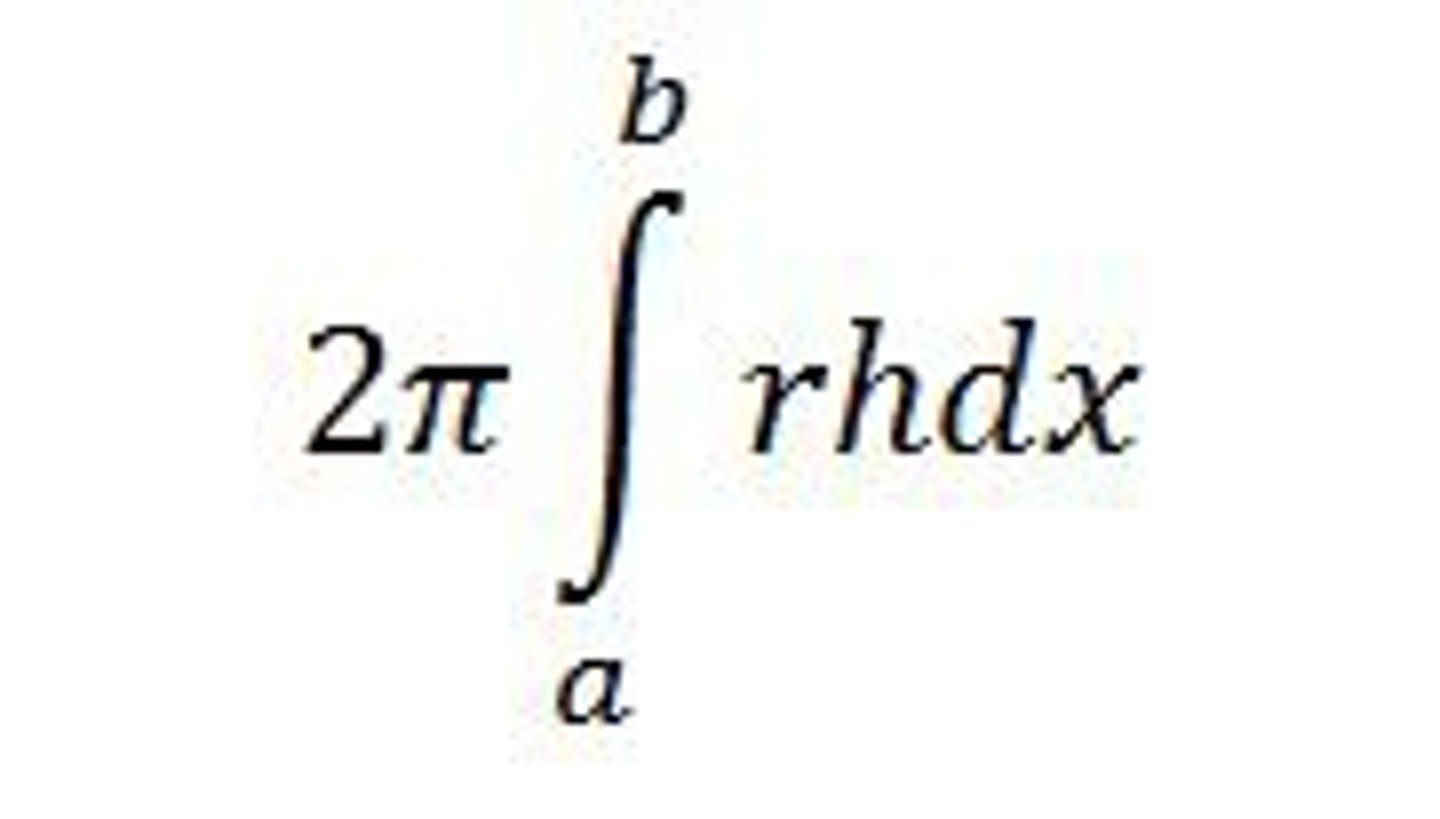
Riemann Sum

Riemann Sum: Trapazoidal
http://images.slideplayer.com/22/6418662/slides/slide_4.jpg